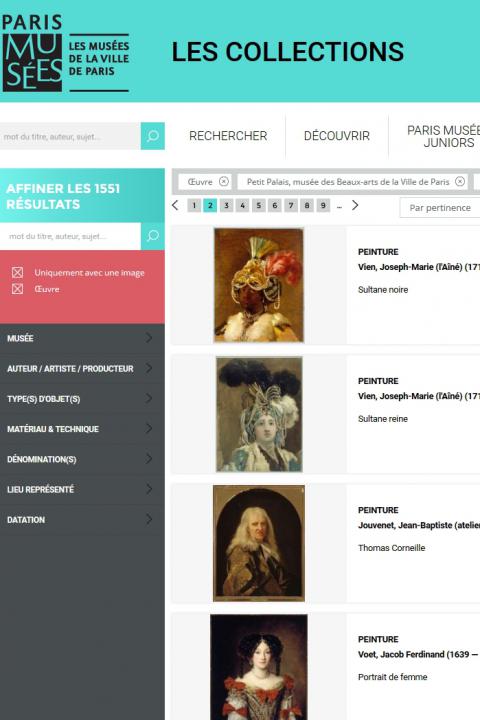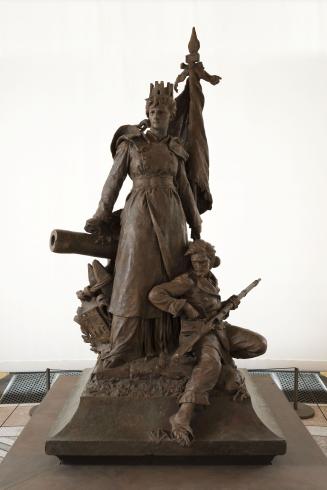The Defence of Paris pays tribute to the heroism of Parisians during the 1870-1871 war. After the defeat at Sedan and the declaration of the Republic, the government of Léon Gambetta organised the “defence of Paris”. For more than six months Paris, besieged, withstood the Prussian army, leading to terrible suffering. In the winter of 1870-1871, Parisians were forced to eat rats and sparrows. Ten years after this tragic episode, the Seine Département organised a competition for the erection of a monument in homage to those who defended the capital, in order to celebrate a key event in the founding of the Third Republic and demonstrate that France, although defeated, was still a great nation.
“Paris was only conquered by famine. Such a defeat is worth more than one victory (1)” wrote a critic in 1883, during the inauguration of the bronze monument, initially located at the Courbevoie roundabout.
Nearly 100 sculptors, including Rodin, Falguière and Bartholdi, took part in the competition for The Defence of Paris. The entry chosen by the panel of judges was that of Louis-Ernest Barrias. (1841-1905). Barrias was a pupil of Jules Cavelier at the École des Beaux-Arts. He won the Prix de Rome in 1864 and was then a resident artist at the Villa Médicis. He enjoyed a very successful career on his return to Paris in 1870. After an initial success with The Maiden from Megara (Paris, Musée d’Orsay) presented at the Salon of 1870, he made his name at the Salon of 1878, with the group titled First Funerals, a marble version of which is on display at the Petit Palais (there is another version in the Musée des Beaux-Arts in Lyon). The creation of the monument to the Defence of Paris marked the beginning of a long official career for Barrias: in the 1880s he was one of the most sought after French sculptors and created several public monuments which became emblematic of Republican “statuomania”, such as the monument to Victor Hugo, inaugurated in 1902, and melted down during the Occupation in 1943.
The success of the Defence of Paris can be explained by the group’s balanced and harmonious aspect: the sculptor manages to cleverly combine allegory and realism, monumentality and movement. The City of Paris is represented by a young woman holding a flag, with a tower on her head and dressed in military uniform. She is leaning on a canon while a young soldier, rifle in hand, protects her. At the back, a young girl crouching down reminds us that the siege spared neither women nor children.
The Defence of Paris on display at the Petit Palais is a preparatory model in plaster, patinated to imitate bronze. Before being placed in the City of Paris collections, it was used to create the final monument still in place in the district of La Défense – which got its name from the sculpture. An exceptional witness to the origin of the sculpted monument, the Petit Palais plaster version, which has recently been restored, is once again on display in the museum’s exhibition rooms after a long period in storage. It allows visitors to discover the talent of Ernest Barrias, an iconic sculptor of the French Third Republic. The City of Paris owns a large collection of his work, still unfamiliar to the general public.
C. C.-V.

City of Paris municipal collection's website
The collections portal can be used to search the collections of Paris’s 14 municipal museums (approximately 336,000 works, including 43,000 belonging to the Petit Palais).
It is also possible to download around 12,000 images of the museum’s works free of charge.
Access the Museums of the City of Paris collections portal
Extern databases
Discover a selection of databases online presenting works from the Petit Palais or documents concerning the history of the museum.

